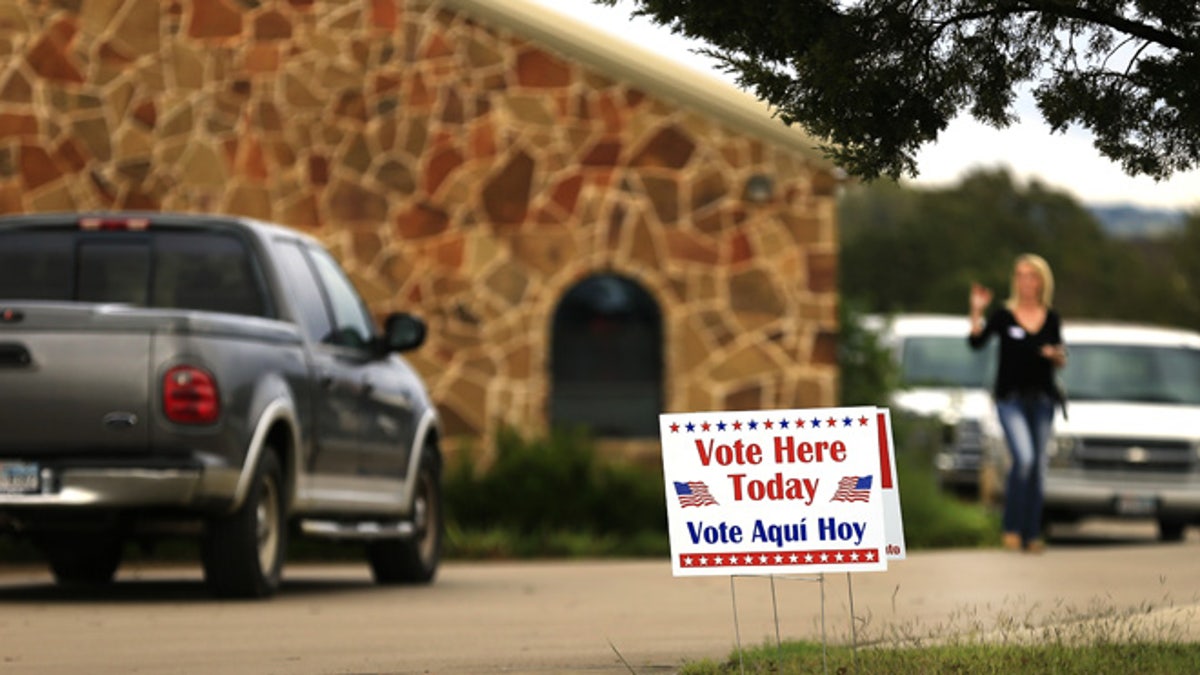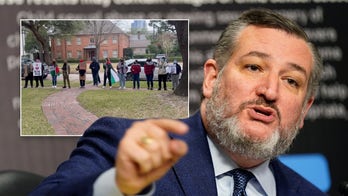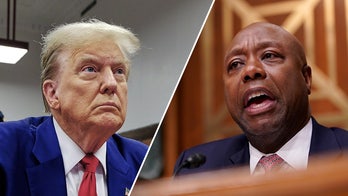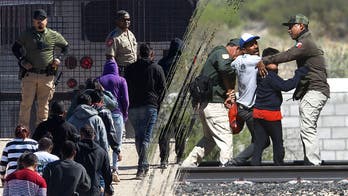
BROCK, TX - NOVEMBER 08: Voters arrive at a polling place to cast their ballots on November 8, 2016 in Brock, Texas. After a contentious campaign season, Americans go to the polls today to choose the next president of the United States. (Photo by Ron Jenkins/Getty Images) (2016 Getty Images)
A popular theory in the days leading up to Tuesday’s presidential election was that Latinos – strongly angered by Donald Trump’s harsh rhetoric on immigration – would come out in droves to the polls and usher Hillary Clinton into the White House.
That theory didn’t pan out as planned as Trump claimed victory in the early morning hours of Wednesday, but the role that the Hispanic vote played in him winning the election is still up in the air.
Exit polls and post-election numbers have varied wildly in regards to the Latino electorate, with some results showing that Hispanics voted in record numbers while others show only minimal gains in turnout from previous years.
“Exit polls just make a guess,” Matt Barreto, the co-founder of the polling firm Latino Decisions, told Fox News Latino. “Turnout could be as low as 8 percent or it could be up to 14 percent, it’s just a guess.”
Exit polls conducted by Pew Research and the U.S.’s major news networks, including Fox News Channel, generally found that the overall Latino vote hovered around 11 percent, with 65 percent of Hispanics casting a ballot for Clinton and 29 percent for Trump.
- Best pix of the week
- Demonstrators protest election of Donald Trump
- Trump wins presidency, overriding high Latino turnout fueled by effort to defeat him
- Bazta Arpaio hoping to boot ‘America’s greatest sheriff’
- Heavy turnout for Latino voters in swing state Nevada
- Latino voter turnout will shape view and influence of community for long haul
- Study says Latinos divided by generation in election
- Opinion: We need to vote down the whole ballot to make a difference for Latinos
If these numbers are true, then Trump actually did better with Latinos than former Republican nominee Mitt Romney did in 2012 when he pulled in just 27 percent — a statistic viewed as a low water for Republicans looking for Latino support.
“It’s possible he did as well or possibly better,” Mark Hugo Lopez, the director of Hispanic research at Pew Research Center, told The Guardian.
“The Latino vote is a diverse vote with many different points of view. Many are military veterans. Many are born in the U.S. and far from Latino roots. Many are evangelicals. So the diversity of the Hispanic electorate can explain some of these results.”
Some people, including Latino Decisions’ Barreto, however, aren’t buying the low turnout numbers.
Citing the unreliability of exit polls and the fact that many polls are conducted in precincts that tend to vote the way a state leans politically, Barreto said the turnout among Latinos is probably much higher. While the polling firm is still sifting through precinct data, their preliminary numbers suggest that 79 percent voted for Clinton and 18 percent for Trump.
“All the precincts we’ve looked at show that the turnout rate was higher in 2016 than in 2012,” Barreto told FNL. “What I’m seeing so far is that the turnout rate is anywhere between two points to 16 points higher than the last election.”
But many conservatives and other critics of Latino Decisions question the reliability of the polling firm given its close ties to the Clinton campaign and its perceived Democratic leanings.
“I understand why Latino Decisions is trying to justify their numbers, but they are totally wrong,” Alfonso Aguilar, the executive director of the Latino Partnership for Conservative Principles, told FNL. “They are a liberal polling firm and funded by liberal organizations.”
Aguilar said that the diversity in the community was looked over during the presidential campaign season and instead focused solely on Hispanics who were concerned with immigration reform. From the numbers he’s studied, Aguilar said in some parts of the country 30 to 35 percent of Hispanic men were casting their votes for Trump.
“Jobs, the economy and national security that many Latinos really care about,” he said. “Not to downplay the importance of immigration reform at all, but there were other issues that Latinos were concerned about.”
The real figures of how many Latinos voted on Tuesday and who they voted for may take some time to sort out. Pew’s Lopez said that a full analysis must await next year’s census survey.




